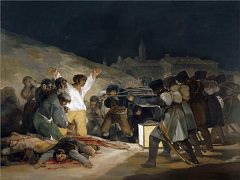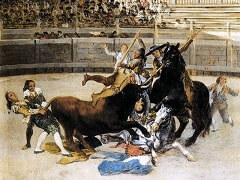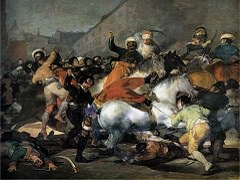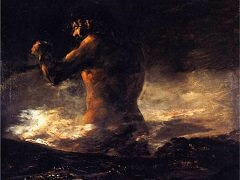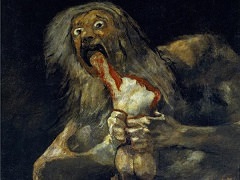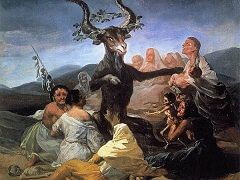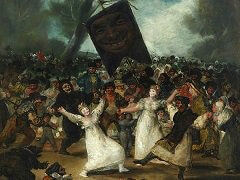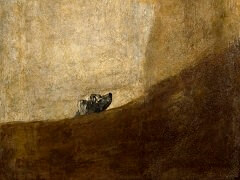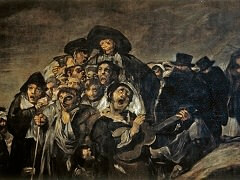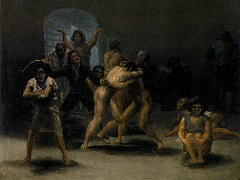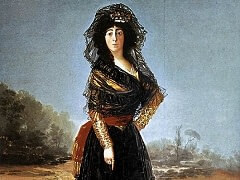A Village Bullfight, 1812-14 by Francisco Goya
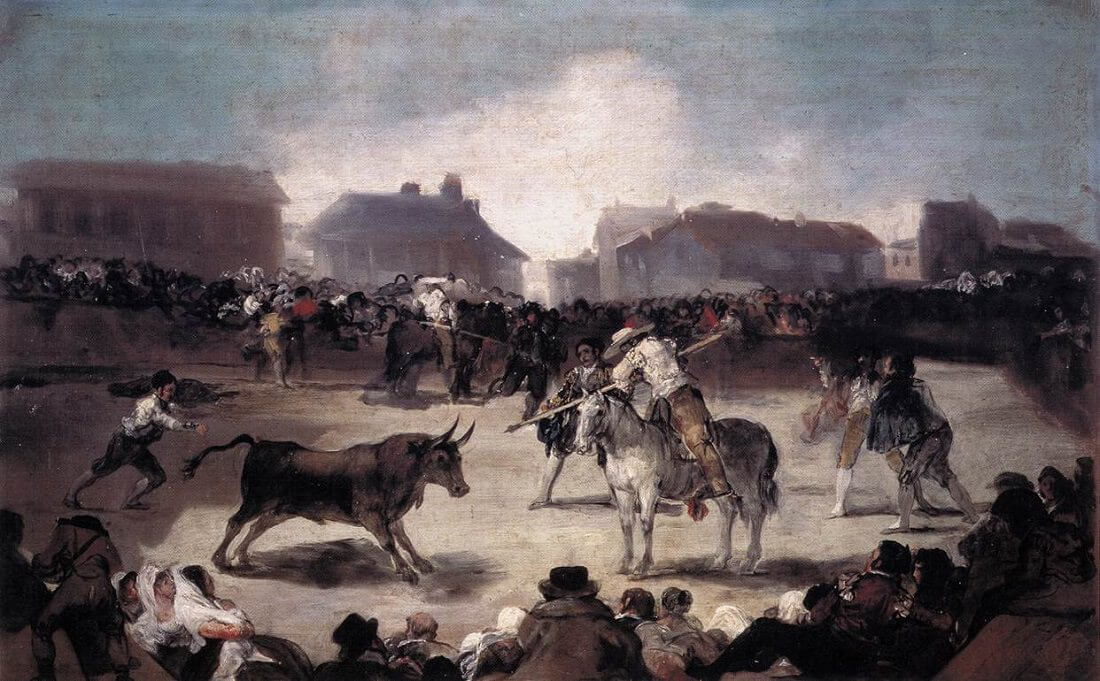
Although many of his contemporaries were opposed to bullfighting (Charles III imposed restrictions on the sport; it was banned in 1808 but the ban was lifted by Joseph Bonaparte in 1810), there is every reason to believe that Goya was an aficionado. There is even some truth in the stories of his performance in the ring. Goya made portraits of several bullfighters and many paintings, drawings and engravings of the national sport. A scene of the baiting of young bulls {La Novillada}, in which he portrayed himself, was the subject of one of his early tapestry cartoons, and a rounding up of bulls (El encierro de los toros) was one of his decorations for the Osuna country residence. In 1816 he published the Tauromaquia, a series of 33 etchings, for which he had made many drawings. Among his last works executed in France is a set of four lithographs, the Bulls of Bordeaux.
A Village Bullfight is one of his most impressive paintings of the subject. The sketchy style and dark tones create a vivid impression of the actions of the protagonists and of the dense crowd of spectators grouped round the scene. It was perhaps in a setting such as this that Goya himself sometimes entered the ring as an amateur bullfighter.

